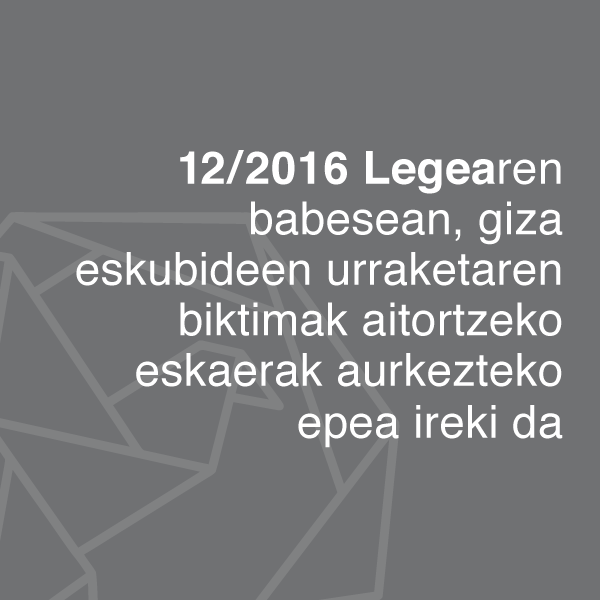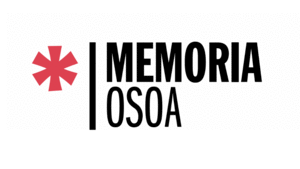It is difficult to define a specific period of time to quantify the victims produced as a result of the political conflict that Euskal Herria has experienced.
Egiari Zor Foundation tries to be as accurate as possible when diagnosing the origin and results of the violence suffered. If we go back to the violent origins of our political conflict, we find a milestone that marks our memory and that is the starting point of the violent continuum we have lived until the present days: the coup d'etat perpetrated in July of 1936. Therefore, we consider that, when quantifying the different victims, this date must be the referential starting point.
In addition, we believe that the year 2010 should not be set as a limit to this quantification: it should go as far as the present days, as the political conflict still remains. After the definitive cessation of the armed activity of ETA in 2011, there have been cases of police violence, ideological persecution, political detentions, media and mobilization illegalizations, etc., which cannot be excluded from the context of the "Basque case".
An example of this is the death of Iñigo Cabacas due to a shot fired by the Ertzaintza in 2012; the persistence of the dispersion of Basque prisoners; the imprisonment, in 2016, of the seven young of Altsasu accused of hitting two Guardia Civil in a bar. The political conflict still endures and the violations persist, even though ETA no longer kills.
There is no doubt that, prior to the birth and armed activity of ETA, as well as at the same time, there was already a direct, structural and cultural violence: Franco’s dictatorial regime. According to the point of view of Egiari Zor, this violence still persists, to a lesser degree, beyond the definitive disappearance of ETA, in 2018. It is absolutely serious that who should be the guarantor of the human rights of citizens has been the one that violates them.
Different associations of Historical Memory carry out an important work regarding the period after the 1936 coup d'etat, including the first decades of Franco’s dictatorship. That is why in Egiari Zor we have focused on the quantification of the victims caused by the Spanish and French States since 1960, with special emphasis on how small is the percentage of recognized victims by the authorities. This data can be visualized in the following three sections referred, respectively, to dead, tortured and injured.
The forms of violence that States have used for long years in the context of the political conflict in Euskal Herria have been very plural and diverse. They are, therefore, just as plural and diverse as the victims that these violences have generated.
Trying to enumerate each one of them is a task of enormous difficulties, because each person that has suffer these violences can nuance a different experience.
In spite of it, observing the number of people killed, injured and tortured, since 1960, due to the violence carried out by the Spanish and French States, and verifying that the vast majority of them are not recognized as victims , can offer us a photograph of the reality that Euskal Herria lives.



